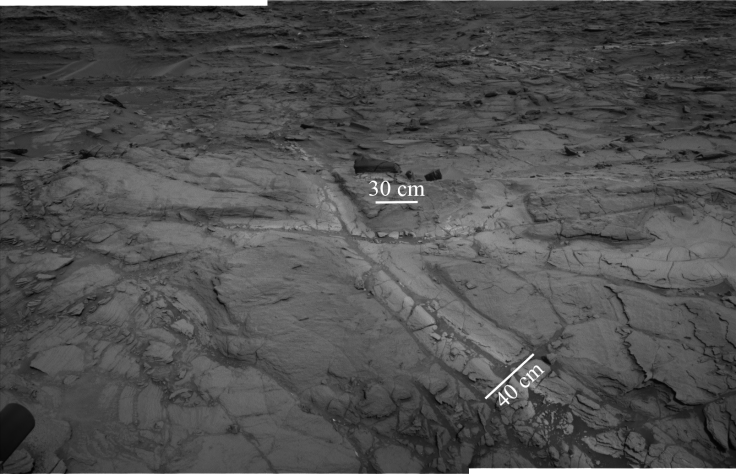Aliens On Mars? NASA’s Curiosity Rover Finds Data That Extends Window For Life On Red Planet

NASA’s Curiosity rover has been exploring Gale Crater on Mars since the early hours of Aug. 6, 2012. Among the many scientific discoveries it has made during its mission to search for the possibility of existence of life on the red planet, the latest one extends the time frame in which life as we know it could have existed on our neighboring planet.
A paper published Tuesday in the Journal Geophysical Research Letters describes “halos” in Gale Crater, which are bedrocks with high concentration of silica and lighter-toned than the fractures within the crater which they surround. That is an indication of the fact Mars had liquid water for much longer than believed earlier.
“The concentration of silica is very high at the centerlines of these halos. What we’re seeing is that silica appears to have migrated between very old sedimentary bedrock and into younger overlying rocks. What this finding tells us is that, even when the lake eventually evaporated, substantial amounts of groundwater were present for much longer than we previously thought — thus further expanding the window for when life might have existed on Mars,” Jens Frydenvang, a scientist at Los Alamos National Laboratory and the University of Copenhagen, who was lead author of the paper, explained in a statement issued Tuesday by the Department of Energy’s laboratory.
Read: Curiosity Rover Beginning To Show Its Age
During the over 1,700 Martian days Curiosity has spent on Mars, it has traveled more than 16 kilometers (10 miles), from the bottom of Gale Crater — which was once filled with a lake — to some way up Mount Sharp that sits in the center of the crater. The halos with heightened silica concentration were found about 20 to 30 meters (67 to 100 feet) above a rocky layer of ancient lake sediments, which also had high silica content.
“This tells us that the silica found in halos in younger rocks close by was likely remobilized from the old sedimentary rocks by water flowing through the fractures,” Frydenvang said in the statement.
Some of the rocks with halos probably started out as dunes, deposited in their place by wind. However, those dunes could only have formed after the lake had dried up. The presence of halos — which required flowing water — in rocks that formed after the drying of the lake indicates the presence of flowing groundwater for longer than previously believed.
Read: Curiosity Studying Sand Dunes On Mars
The laser-shooting Chemistry and Camera instrument aboard Curiosity was used to analyze the halos. ChemCam, as the instrument is referred to, was developed at the Los Alamos lab, in collaboration with French space agency, Centre National d'études Spatiales.
Gale Crater, which is almost 100 miles across and about 3.5 to 3.8 billion years old, formed when a meteor hit Mars in its early history. Mount Sharp that is at the center of the crater rises to a height of about 5.5 kilometers, somewhat shorter than Denali, which is almost 6.2 kilometers tall.
© Copyright IBTimes 2024. All rights reserved.











